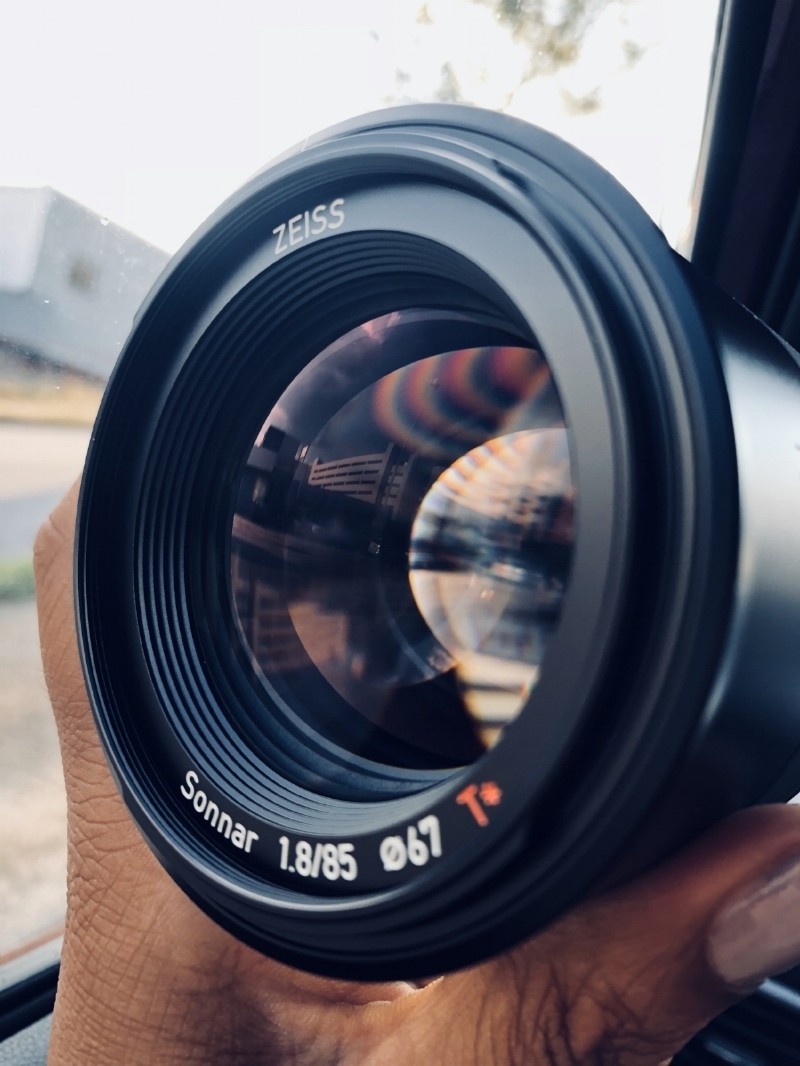The 85mm lens, also known as the perfect portrait focal length, is a key tool in any camera kit. I recently tested the Sigma 85mm art lens, and this past weekend, I tried the Sony Zeiss Batis 85mm. The first thing I noticed, was how dreamy this lens is. This lens is buttery smooth, rendering a very soft light in almost any situation. Unlike the sharpness you find with the Sigma lens, with its crisp bokeh and quick focus, the Sony Zeiss Batis offers a much more soft atmospheric approach to this classic portrait focal length.
Bokeh
It creates a soft dreamy effect to how it slowly pulls its focus. In a bright outdoor situation, you have an intense depth of field. However, it doesn’t handle bokeh like the Sigma 85mm art lens. My calculation is that due to the more compact nature of this lens, the glass is less and the reflection therefore is altered. So it’s not necessarily no bokeh, but rather a different and softer more subdued bokeh presence. Also, despite this not being an art series lens, there is no color grading on any of the footage shot on this lens shared above. The colors, clarity, and vibrancy is incredible.
Weight
This lens is as light as a feather. I didn’t think about weight once. This is enough to justify having both this lens and the Sigma 85mm art lens. For longer shoots, I would probably grab this lens, versus the 4.79 pound Sigma Art glass.
Focus
The focus is ironically not as quick as the Sigma 85mm. Typically, the biggest selling point for native lenses is their focus communication. This was pretty clear to me immediately, but as I continued to use the lens, I found a sort of rhythm to have the slow and smooth focus shift to work in my favour. It’s not necessarily hard to focus on this lens, but rather the focus pull is a lot slower and smoother. For quick fast moving events, you have to keep this in mind, and be sure you’re positioned in clear view of your subject.
Aperture
This camera comes in at f1.8. This is a solid wide aperture lens. However, compared to the Sigma 85mm art lens at f1.4, there is a slight difference felt. Now, this lens is still a very comfortable aperture for most of the things I’d shoot, however, as stated in my previous post, whenever I can go lower in aperture, I do.
Low Light
The low light performance is solid, but when shooting at 120 FPS, with a shutter speed of 240, the shots became slightly grainy. This is a challenge in any lower light situation, but this is where that additional 0.4 f stop would come in handy.
Ultimately, if I had to pick one lens, I would go with the Sigma 85mm art lens. For the faster focusing, the lower aperture, and the way it renders bokeh. However, in an ideal situation, I would have both lenses. I never really understood the justification for having two lenses at the same focal length, before using these two lenses. They render totally different images, and can be best suitable for entirely different situations.
Drop a comment below, and let me know your visual preference. Dreamy soft footage versus sharp crisp bokeh?

